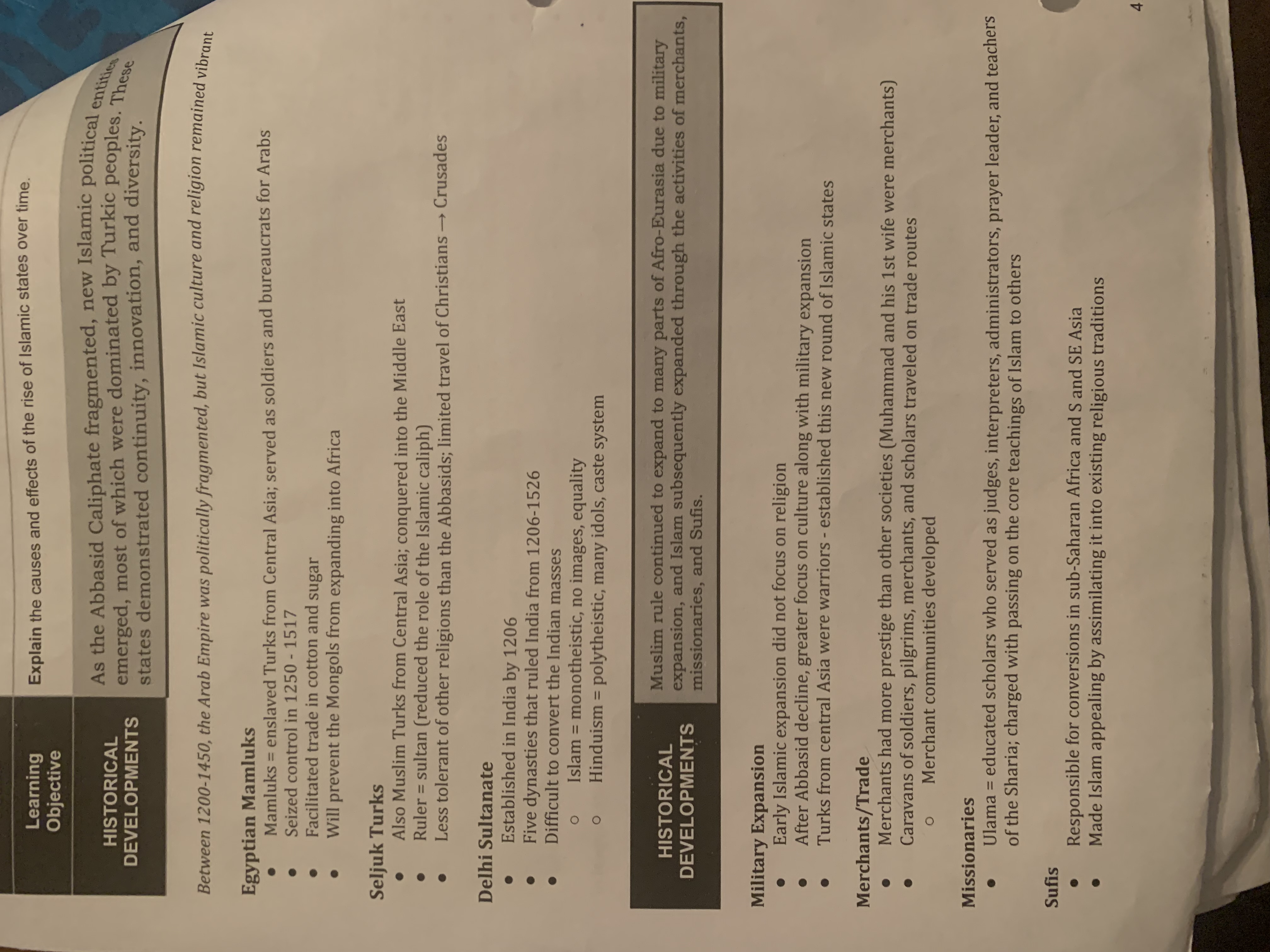Explain the causes and effects of the rise of Islamic states over time.

Understand the Problem
The question is asking to explain the causes and effects of the rise of Islamic states over time, highlighting historical developments such as the roles of various groups like the Mamluks, Seljuk Turks, and the Delhi Sultanate, along with aspects of military expansion, trade, and missionary work.
Answer
Decline of other empires, military expansion, trade, and missionaries caused the rise of Islamic states, resulting in new political entities, Afro-Eurasian expansion, cultural continuity, and increased trade.
The causes for the rise of Islamic states include the decline of the Roman and Persian Empires, military expansion, trade, and the activities of merchants and missionaries. The effects include the establishment of new Islamic political entities, expansion into Afro-Eurasia, cultural and religious continuity, and increased trade interactions in the region.
Answer for screen readers
The causes for the rise of Islamic states include the decline of the Roman and Persian Empires, military expansion, trade, and the activities of merchants and missionaries. The effects include the establishment of new Islamic political entities, expansion into Afro-Eurasia, cultural and religious continuity, and increased trade interactions in the region.
More Information
The rise of Islamic states significantly transformed the political, economic, and cultural landscapes of Afro-Eurasia, integrating vast regions through trade networks and religious conversion.
Tips
A common mistake is overlooking the role of trade and missionaries in the spread of Islamic states. It's important to consider social, economic, and military factors collectively.
Sources
- The rise of Islamic empires and states (article) - Khan Academy - khanacademy.org
- 1.2E: Governance Across the Islamic World - Thothios - thothios.com
AI-generated content may contain errors. Please verify critical information